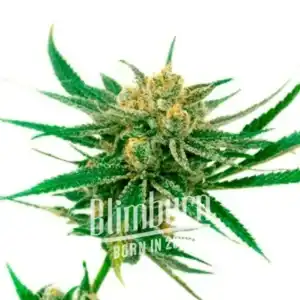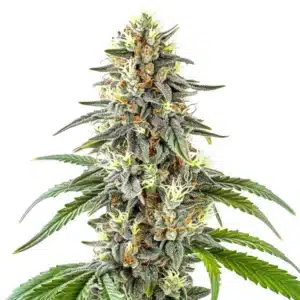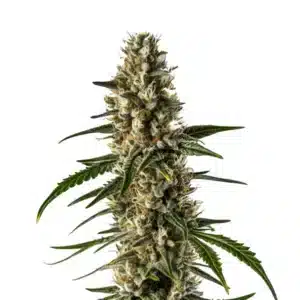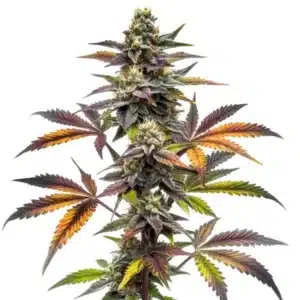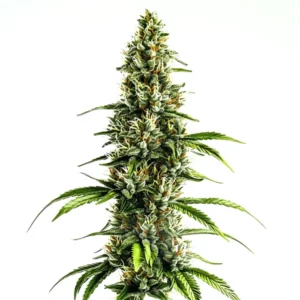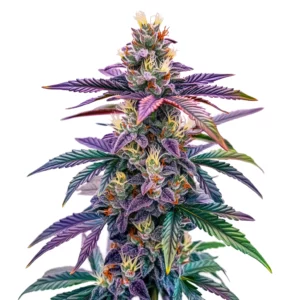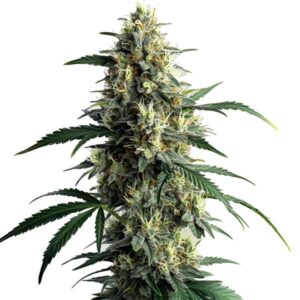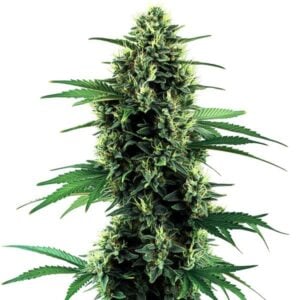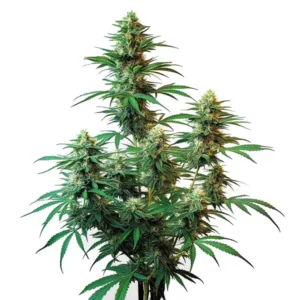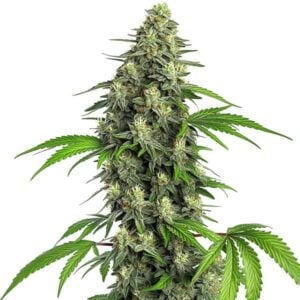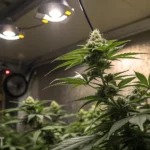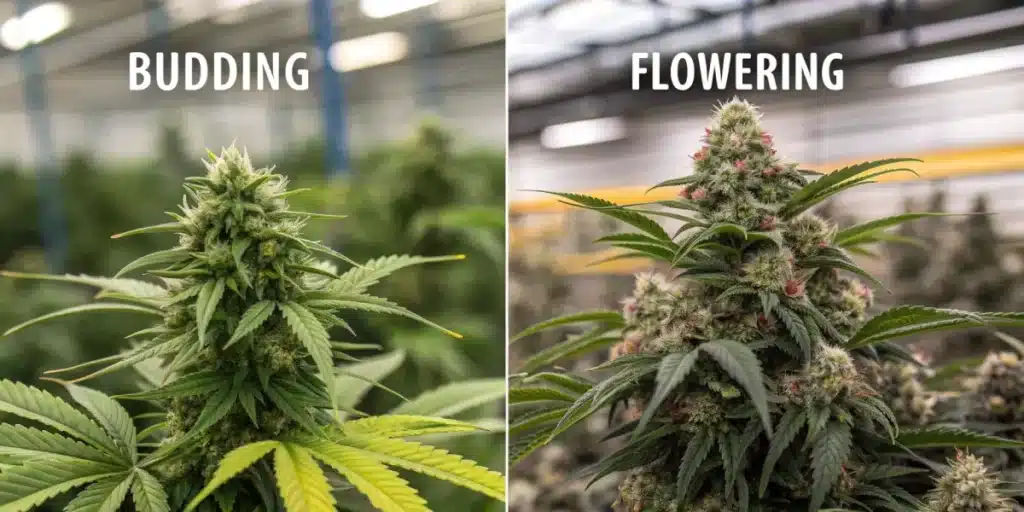
Budding vs Flowering: What Growers Need to Know
A flower is the mature reproductive part of a plant, typically vibrant in color and housing the plant’s reproductive organs. A bud, by contrast, is an immature or undeveloped part of the plant, it could become a leaf, a flower, or a new shoot. Buds are generally categorized as either vegetative (producing stems and leaves) or reproductive (forming young flowers). Essentially, a bud represents the beginning, while a flower is the result, highlighting the key difference between potential growth and full development.
When cultivating cannabis, two terms that frequently come up are budding vs flowering. While they might seem similar, they refer to different stages in the plant’s life cycle, each playing a distinct role in the development of high-quality yields. Knowing the differences and the unique needs of these phases is essential for growers looking to optimize plant health and maximize harvests.
Recommended Strains
White Amnesia
|
|
THC | 18% - 22% (Medium) |
|
|
Type | Feminized |
|
|
Yield | High |
|
|
Phenotype | 30% Indica / 70% Sativa |
White Fire OG
|
|
THC | 24% - 28% (High) |
|
|
Type | Feminized |
|
|
Yield | High |
|
|
Phenotype | 50% Indica / 50% Sativa |
Budding represents the early development of flowers, signaling the plant’s transition from vegetative growth to reproductive growth. It’s the moment when growers start seeing the first signs of potential yields forming. On the other hand, flowering encompasses the entire period during which the plant produces mature flowers ready for harvest. Each stage demands specific environmental adjustments, nutrient management, and careful observation to ensure a successful outcome.
Budding typically begins once the plant receives signals either from a change in light cycles or from its natural genetic programming that it’s time to shift focus from foliage growth to flower production. This phase is marked by the appearance of small pre-flowers at the nodes where branches meet the main stem. These tiny structures gradually develop into full-blown buds, making it a highly anticipated stage for growers.
Key Elements of Budding
Budding is an exciting period as it marks the beginning of the plant’s reproductive journey. During this phase, the plant still requires a steady supply of nutrients but with a slightly altered ratio compared to the vegetative stage. Nitrogen, which plays a crucial role in leafy growth, should be dialed back, while phosphorus and potassium levels should be increased to support bud formation.
Proper lighting is another essential factor during budding. Many growers switch to a 12/12 light cycle, meaning 12 hours of light followed by 12 hours of darkness, to encourage budding in photoperiod strains. Autoflowers, on the other hand, begin budding based on age rather than light cycles, which means their nutrient and environmental needs must be carefully managed from the start.
Maintaining optimal temperature and humidity levels during budding is critical. A temperature range of 68-77°F (20-25°C) helps facilitate growth, while humidity should be kept between 40-50% to avoid mold and mildew issues. Sudden fluctuations can stress the plant, potentially leading to slow bud development or hermaphroditism.
Another sign of the budding phase is the production of trichomes tiny resinous glands responsible for producing cannabinoids and terpenes. While these trichomes are initially clear, they will gradually become cloudy or amber as the plant progresses toward full flowering.
Promos & Deals
Genetics and Their Influence on Budding vs Flowering
The genetic makeup of a cannabis plant significantly influences the duration and characteristics of both budding and flowering stages. Some strains naturally have longer flowering periods, while others transition from budding to flowering more rapidly. Choosing the right strain for specific growing conditions can greatly impact the final yield and quality of the buds.
Recommended Strains
- White Widow – Known for its balanced effects and ease of cultivation, White Widow typically transitions smoothly from budding to flowering, producing dense, resin-rich buds.
- Blue Dream – This hybrid strain offers a relatively fast budding process and robust flowering, with a focus on producing large, flavorful buds.
- Northern Lights – A classic indica that thrives in indoor environments, featuring a short budding phase followed by heavy resin production during flowering.
- Sour Diesel – A sativa-dominant strain that requires more time in the flowering phase but delivers high yields and potent effects.
- Girl Scout Cookies – A hybrid with a relatively balanced budding and flowering cycle, producing high-quality buds with complex flavors.
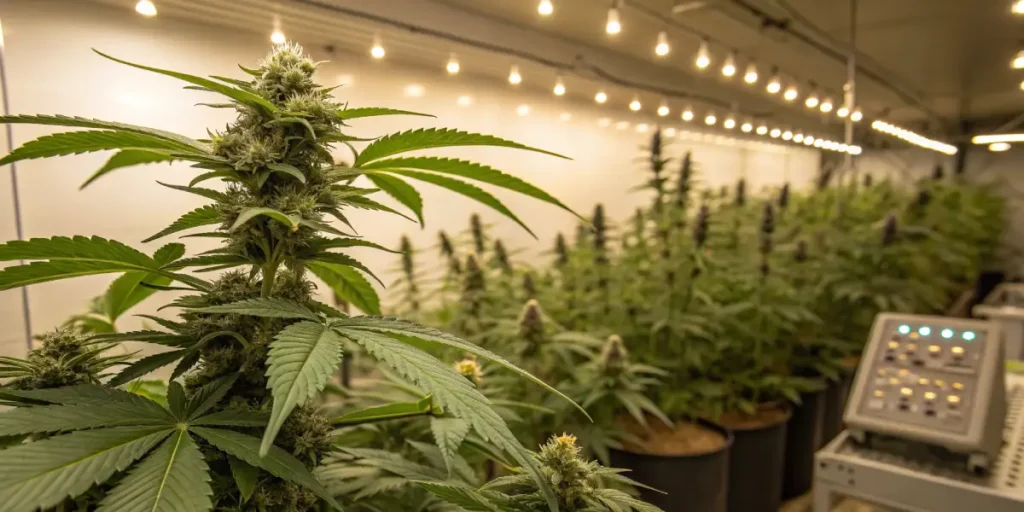
Transitioning into Flowering
Once budding is well underway, the plant moves into the flowering stage, where the real magic happens. This stage is characterized by rapid bud development, increased resin production, and the unmistakable aroma of mature cannabis. The plant’s energy is fully directed toward developing large, dense flowers.
During flowering, nutrient demands shift even further. Nitrogen should be minimized, as excessive amounts can lead to overly leafy growth rather than dense buds. Instead, a higher concentration of phosphorus and potassium is crucial to encourage flower swelling and resin production.
Flowering plants also require precise environmental controls to prevent potential threats like pests and mold. Humidity levels should be reduced slightly compared to the budding stage, ideally around 35-45%, to prevent bud rot. Air circulation is key, as dense buds can trap moisture and create an environment conducive to mold.
As the flowering stage progresses, growers will notice changes in pistils and trichomes. Pistils, the hair-like structures emerging from buds, will start to change color from white to orange or brown, signaling maturity. Trichomes, which began developing in budding, become more prominent and shift from clear to cloudy, indicating peak potency.
Environmental Factors Affecting Budding vs Flowering
Environmental factors play a critical role in how smoothly cannabis transitions between budding and flowering. Light exposure, temperature fluctuations, humidity levels, and airflow all contribute to the overall health of the plant and the success of each stage.
- Lighting Requirements: A consistent light cycle is necessary for photoperiod strains to move from budding to flowering. Inconsistent lighting can lead to stress and delay flowering.
- Temperature Management: Budding plants prefer moderate temperatures, but flowering requires slightly lower temperatures to prevent bud rot and maximize resin production.
- Humidity Control: Proper humidity levels prevent mold and mildew, with budding requiring higher humidity than flowering.
Identifying Budding vs Flowering
Recognizing the differences between budding and flowering is essential for adjusting care practices accordingly. Budding is characterized by the emergence of tiny white pistils and pre-flowers, while flowering showcases more developed buds with noticeable density and a stronger aroma.
Growth patterns also change significantly between these stages. In the budding phase, plants may continue to stretch and grow taller, whereas flowering tends to focus on thickening and maturing the existing structure.
Understanding the timeline of these phases is important. Budding usually begins a few weeks after the light cycle change, with flowering lasting anywhere from 6 to 12 weeks, depending on the strain.
Optimizing Conditions for Both Phases
Tailoring environmental conditions to suit each stage is a key component of successful cannabis cultivation. During budding, maintaining steady temperatures and moderate humidity is vital, while flowering demands even greater precision to prevent common issues such as nutrient deficiencies and mold.
Lighting also plays a critical role in both phases. Full-spectrum LED lights that offer both blue and red wavelengths can support plants through their entire life cycle, promoting healthy budding and robust flowering.
Watering practices should also be adapted accordingly. During budding, plants require frequent watering to support growth, but overwatering should be avoided to prevent root rot. In flowering, watering frequency may need to be reduced to encourage resin production and prevent bud rot.
Pest and Disease Control at Each Stage
Both budding and flowering phases are vulnerable to pests and diseases that can hinder growth and reduce yields. Prevention and early detection are crucial to maintaining plant health.
- Common Pests: Spider mites, aphids, and whiteflies are prevalent during the budding stage. Using organic pesticides and beneficial insects can help control infestations.
- Fungal Infections: Powdery mildew and bud rot can develop if humidity levels are too high during flowering. Proper air circulation and dehumidification can mitigate these risks.
- Preventive Measures: Regular inspections, maintaining cleanliness in the grow area, and using companion planting techniques can help deter pests naturally.
Harvest and Maturation: Knowing When Flowering Ends
Recognizing when cannabis plants have completed their flowering stage is essential for achieving the best potency and flavor profiles. Several indicators can help determine the perfect harvest window.
- Pistil Color: As flowering nears completion, pistils will change from white to orange or brown, indicating readiness.
- Trichome Appearance: Using a magnifying glass, growers should look for trichomes to turn from clear to cloudy or amber, signaling peak THC content.
- Leaf Yellowing: Some natural leaf yellowing during the final weeks of flowering is normal and can be a sign that the plant is ready for harvest.
Techniques to Enhance Budding and Flowering
Advanced techniques can help maximize the potential of both stages, improving yields and overall plant health.
- Low-Stress Training (LST): Encourages even canopy growth by gently bending stems, allowing light to reach more bud sites.
- Defoliation: Carefully removing unnecessary leaves to improve airflow and light penetration, leading to bigger and denser buds.
- Proper Feeding Schedules: Adjusting nutrient ratios based on the plant’s needs in each phase, ensuring optimal development.
By understanding these additional aspects of budding vs flowering, growers can fine-tune their cultivation practices to maximize yields and ensure high-quality buds.
Common Challenges in Budding vs Flowering
Mistakes during these stages can lead to disappointing yields or compromised quality. Overfeeding is a common issue, particularly during budding, where excessive nutrients can lead to nutrient burn and hinder proper development. Finding the right balance in feeding schedules is crucial.
Another common mistake is improper defoliation. While some leaf removal can improve airflow and light penetration, excessive defoliation during budding can stress the plant and reduce yield potential.
Failing to monitor pH levels in the growing medium can also negatively impact nutrient uptake. A pH range of 6.0-6.5 is generally optimal for soil, while hydroponic systems require slightly lower levels.

Maximizing Potential Through Training Techniques
Certain cultivation techniques can be employed to enhance both budding and flowering. Low-Stress Training (LST) involves gently bending stems to create a more even canopy, ensuring consistent light exposure across the entire plant. This technique is particularly effective during budding to prepare for a more productive flowering phase.
Pruning, when done strategically, can also boost flower production by redirecting energy to the most promising bud sites. Removing lower branches and leaves that receive minimal light can help the plant focus its energy on upper, more productive areas.
Bringing It All Together
Achieving successful budding and flowering requires a deep understanding of the plant’s needs throughout its life cycle. By staying vigilant with environmental controls, adjusting nutrient regimens appropriately, and applying training techniques strategically, growers can enjoy healthy plants and bountiful harvests.
FAQs
How long does the budding stage last?
The budding stage can last anywhere from 1 to 3 weeks, depending on the strain and growing conditions. Some strains may show buds sooner, while others take longer to develop visible flowers.
What is the best light cycle for budding and flowering?
For photoperiod strains, a 12/12 light cycle (12 hours of light and 12 hours of darkness) is typically used to induce budding and flowering. Autoflowering strains, however, can thrive under a constant 18/6 or even 20/4 light cycle.
Can you switch nutrients between budding and flowering stages?
Yes, nutrient requirements change as the plant moves from budding to flowering. During budding, a balanced NPK ratio is crucial, while flowering requires higher phosphorus and potassium levels to encourage bud development.
Why are my buds not forming properly?
Improper lighting, nutrient deficiencies, or environmental stressors such as high humidity or temperature fluctuations can hinder bud formation. Regular monitoring and adjustments can help resolve these issues.
Should I trim fan leaves during flowering?
Selective trimming can improve airflow and light penetration, but excessive defoliation may stress the plant and reduce yields. It’s important to find a balance and only remove leaves that block bud sites.
By understanding these additional aspects of budding vs flowering, growers can fine-tune their cultivation practices to maximize yields and ensure high-quality buds.


